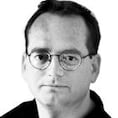David Walsh was hit hard by the collapse of the Celtic Tiger economy and the resulting lack of work in construction. So, with his wife, he decided to move the family and their two children to Sydney in 2009. He says they had $4,000 (€4,666) to their name; his wife says it was $5,000.
Walsh's desire to succeed had originally led him to abandon his course at the University of Limerick to work at Intel in Leixlip, where he was doing work experience. He later finished his IT degree at Griffith College in Dublin.
Having always had a desire to travel, Walsh worked in the early 2000s as an SAP consultant, first in Germany and then Australia.
“Australia is comfortable for Irish people, with the culture and connections, with cousins and the language,” he says.
He went back to Ireland in 2004, having gained Australian permanent residency, something that would later prove crucial.
Like many others, he got into the domestic construction business in Ireland.
“I had always liked doing things with my hands. I wasn’t sure if it was a career break, but it was going really well and I enjoyed it. Then 2008-09 happened. Things just collapsed. The business we had got into difficulty. The scars of what happened still run deep. I just couldn’t believe that the tide could go out so quickly.”
His Australian residency was suddenly vital.
“We were taking furniture other people had left on the side of the street to furnish where we were renting in Sydney. I spent the first three weeks digging a foundation for two Italian brothers. I was sending out CVs every night, concentrating on areas where the macros were good, sustainability and efficiency within buildings. I knew a bit about construction and I knew a lot about technology so I was looking at getting into something I knew would last.
“The government was demanding mandatory disclosure of emissions, and tenants were demanding green leases, and buildings didn’t operate as they should, so I saw a future in that sector monitoring energy consumption.”
Done better
Having got into the industry, he saw how things could be done better.
“I looked at the data and it was just electricity submeters. I thought, ‘There’s a better mousetrap in all of this. Why can’t we get the data from the pumps and fans directly?’ Everybody told me you can’t do that. The big companies lock down the data. But I knew it could be done, but that the company I was with at the time had just never thought of it.
“That was the eureka moment. I still needed that job because we were only getting back on our feet. So I stayed working with them for three years before going out on my own.
“I started writing software at night and selling it during the day and built out the team. I got people writing the software who are much better than me. We got [the contract for] one building, then we got a couple of shopping centres and a few hotels and built it out like that.
“The best way to describe our technology is with a medical analogy. If you went to a GP with a pain in your elbow, if the GP can’t diagnose what it is, you’ll go to a specialist. And if the specialist can’t tell you what’s wrong, you’ll go for an MRI scan. What we’ve essentially done is build an MRI scanner for buildings. Everything we identify are low-cost fixes. The inefficiencies are there. The problem people have is they don’t have access to the data.”
Walsh’s company, CIM Enviro, raised three million Australian dollars in funding from the government-backed Capital Markets Co-operative Research Centre, but he is keen to stress that it was about far more than the money.
“It’s not expensive to set up a business these days, with working remotely, Amazon for servers, Gmail [for communicating] and Xero for accounting. We didn’t need the capital but I knew that it’s not just about the capital, it’s about the expertise. Money and start-ups I liken to sugar and kids: a little bit is great but too much makes them go crazy.”
Waste
He has no time for the waste that goes on with some start-up funding. “Good engineers don’t want beanbags and ping-pong tables, they just want a problem to solve.”
CIM Enviro won start-up of the year at the Irish Australian Business Awards and now employs 24 people. It not only operates across Australia, but has also recently expanded to Dubai.
He says the Australian government does not get enough credit for how it helps start-ups, citing in particular “the research and development tax rebate and the grants that are available. There is also a lot of venture capital here. We get two or three calls a month from venture capitalists wanting to invest in the business”.
Walsh says Irish people with a tech background will find a welcome in Australia.
“They are crying out for system architects, software developers and front-end designers. An Irish person coming out of uni with a computer science background will definitely be able to get a good role here.”
With CIM Enviro having dozens of clients and $100 million in contracts over the next five years, Walsh is proof of the pudding.


















